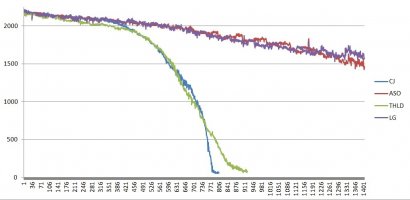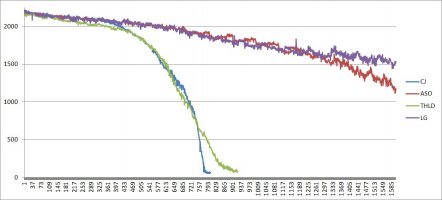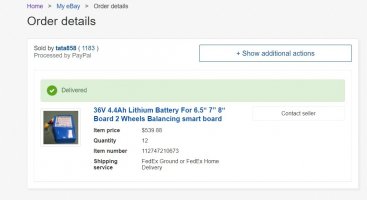First off, I want to apologize to everyone for not posting sooner. I meant to log in to post so many times, and I didn't. Today I'm making an effort to post this, so here it goes.
Originally I was going to quit at 2,130 cycles when the ASO cell kicked the bucket, but I kept going because I was still testing other cells for my powerwall, and it didn't take any extra effort to continue cycling, but I did stop taking pictures of every cycle. I got to 2,425 Cycles and finally quit. As you can see, the LG cell was still alive and kicking, even after 2,425 cycles. Would it have made it to 3,000 cycles? I guess someone else will have to find out.



At the 2,130 cycle mark, I retested all the cells at each Opus discharge rate.

Crazy to see that the ASO still had more than half of it's original capacity at the 200mA rate.
One question I wasn't able to answer was whether cells degrade linearly or exponentially. While the INR cells both fell off a cliff, the ASO cell looked exponential and the LG looked more linear.

Some fun facts: (1) The LG cell held as much energy as 1.6 Liters of Petrol, or 2/5 of a Gallon of Gas. (2) Between the 4 cells, I burned off almost 37 kilowatts of electricity through one Opus.
Now that the test is over, one thing I want to mention was how I picked my cells. The LG cell was picked because it was the highest capacity 2200mAh rated genuine cell I had. The CJ and THLD cells each had deep spot-welds at the bottom that I initially binned as having a hole in them, but since they didn't leak, I decided to use them for this test. They held up. Lastly the ASO cell. I binned that cell because it was rusting where the top cap meets the separator between the positive and negative cans. It did rust more during the test, but never leaked. So a "rusty" cell made it multiple years and thousands of cycles. I'll go grab my popcorn. Lastly, I never posted the voltages of the cells when I found them. The voltages of the cells were: CJ - 2.64V; ASO - 1.82V; THLD - 3.51V; LG - 2.55V. I think the ASO did fine for being a sub 2 Volt cell.
I hope I provided some useful research for the community. Thank you to everyone who commented and supported me during this test.














